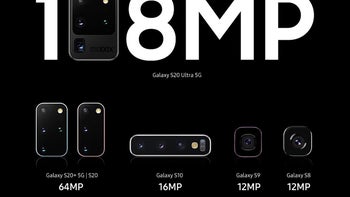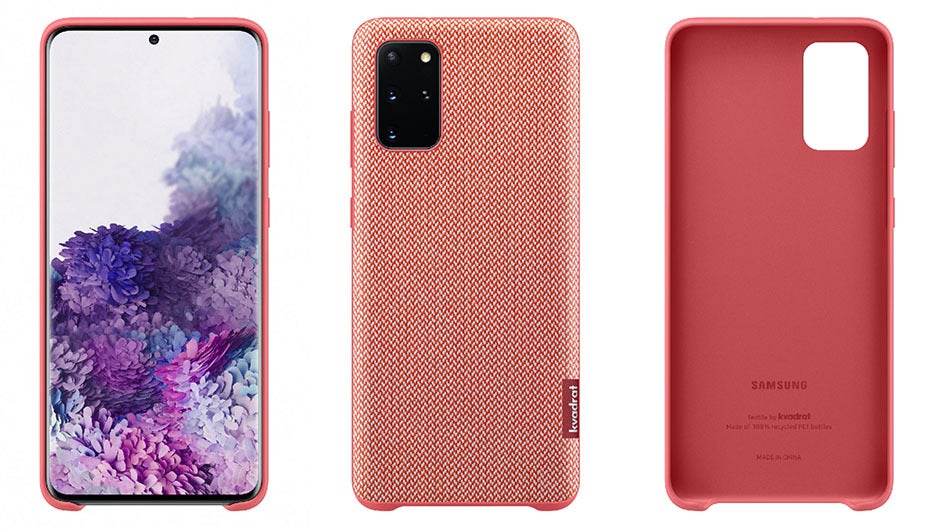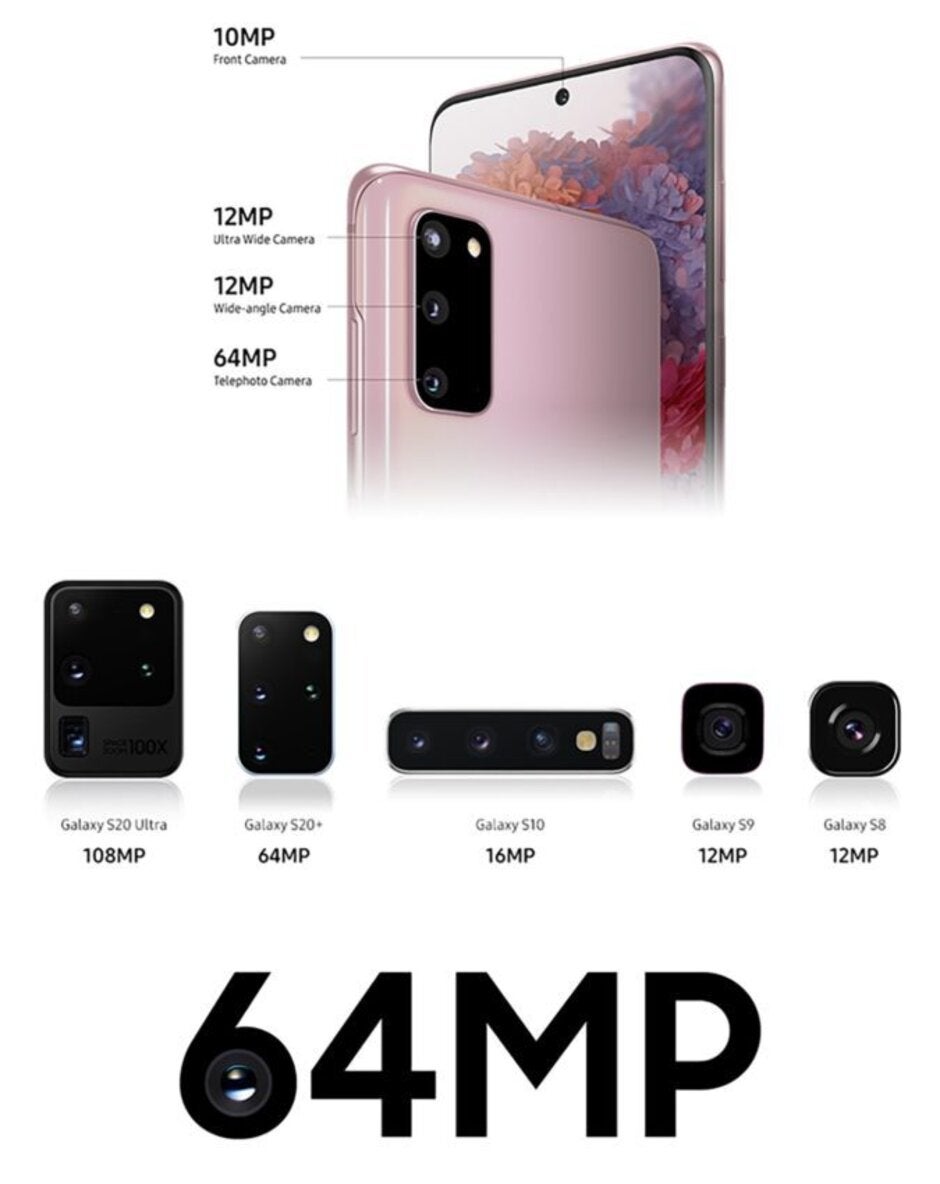Galaxy S20 vs Plus vs S20 Ultra specs, camera and price comparison

Going from a Galaxy S10 in 2019, directly to S20 the following year is an unprecedented move, and not only for Samsung. Apparently, the company considers its newlywed Galaxy S20 family a quantum leap to not only start the decade in 2020, but also signify a "new era" for Samsung, said its new mobile division exec.
That, and the fact that next year we may have Galaxy S21 or even S30 in 2021, while the iPhone would still be at 13. We kid, but naming the series S20 is a handy denomination for the new decade going forward, and a clever marketing ploy, too.
What was once thought to be the S11e as an S10e successor, is now the S20, the S10 heir turned out to actually be S20+, while the rumors for an S20 Ultra to replace the S10+ have materialized, too.
These are the main Galaxy S20, Plus and Ultra hardware specifications:
- Display size: 6.2", 6.7", and 6.9" QHD+ 20:9 with 120Hz refresh rate
- Processor: Snapdragon 865/Exynos 990
- 5G modems
- Cameras: 12MP (main) + 64MP (zoom) + 12MP wide (S20 and S20+)
- S20 Ultra camera: 108MP (main) + 48MP (periscope zoom) + 12MP wide
- Battery: 4000mAh (S20), 4500mAh (S20+), 5000mAh (Ultra)
- Charger: 25W (S20/S20+), 45W (Ultra)
- Memory and Storage: 8/12/16GB (Ultra) RAM, 128/256 (Ultra)/512 (S20+, Ultra) GB
If that's not complicated enough, the Ultra is the one that sports the top periscope zoom and high-res main camera that will allow for some clever up to 100x "Space Zoom" hybrid optical/digital magnification. Thus, with the naming scheme out of the way, let's review which new Galaxy S20 gets what specs so it's easier for you to pull the buy trigger.

Oh, the S20+ gets to have an exclusive Danish Kvadrat case made of recycled PET bottles
Samsung Galaxy S20 vs Plus vs S20 Ultra specs, colors, and display sizes
| Galaxy S20 Ultra | Galaxy S20+ | Galaxy S20 | |
|---|---|---|---|
| Design and dimensions | Cosmic Black and Cosmic Grey 166.9 x 76 x 8.8mm (10.2 mm at the camera bump) 7.80 oz (221 g) | Cloud Blue, Cosmic Black and Cosmic Grey 161.9 x 73.7 x 7.8mm (8.9mm at the camera bump) 6.63 oz (188 g) | Cloud Blue, Cosmic Grey and Cloud Pink 151.7 x 69.1 x 7.9mm (9.1mm at the camera bump) 5.78 oz (164 g) |
| Display | 6.9" 2K AMOLED, Premium Hole Infinity Display, on-demand 120Hz refresh | 6.7" 2K AMOLED, Premium Hole Infinity Display, on-demand 120Hz refresh | 6.2" 2K AMOLED, Premium Hole Infinity Display, on-demand 120Hz refresh |
| Processor(s) and 5G modem | Snapdragon 865, Exynos 990 (5G only) | Snapdragon 865, Exynos 990 (4G and 5G models) | Snapdragon 865, Exynos 990 (4G and 5G models) |
| Memory | 12/16GB DDR5 RAM 128/256/512GB storage | 8/12GB DDR5 RAM 128/256/512GB storage | 8/12GB DDR5 RAM 128GB storage |
| Battery | 5000mAh | 4500mAh | 4000mAh |
Samsung Galaxy S20 vs S20+ vs S20 Ultra camera differences

As you can see, the S20 Ultra is quite a bit thicker than the S20+ or the S20 even. This should serve as a hint that it is the exclusive bearer of Samsung's first periscope zoom setup that offers 5x optical, 10x hybrid, and 100x digital "Space Zoom" magnification. That crazy zoom level is achieved by a hybrid optical/digital efforts when coupled with crops and pixel-binning from the ultra high-res 108MP main sensor and the 48MP telephoto camera.
The S20+ and S20 use the same hybrid cropping and binning to reach the advertised 30x "Space Zoom" levels, but from a 64MP telephoto camera with 3x hybrid optical zoom, so the ultimate magnification total is much smaller. In both cases, however, we wouldn't expect the largest zoom numbers to produce anything but passable results.
| Galaxy S20 Ultra | Galaxy S20+ | Galaxy S20 | |
|---|---|---|---|
| Cameras | 108MP main (12MP photos with 2.4 μm virtual pixel size) 48MP periscope 'Space Zoom', up to 10x hybrid and 100x digital magnification 12MP Ultrawide-angle lens ToF camera 40MP selfie camera | 12MP main, 1.8μm pixel size 64MP Telephoto, 3x optical, 30x Space Zoom 12MP Ultrawide-angle lens ToF camera 10MP selfie camera 8K 30fps or 4K HDR 120fps recording | 12MP main, 1.8μm pixel size 64MP Telephoto, 3x optical, 30x Space Zoom 12MP Ultrawide-angle lens 10MP selfie camera 8K 30fps or 4K HDR 120fps recording |
| Features | 8K 30fps or 4K HDR 120fps recording Bright Night, Single Take, Director’s Cut from all cameras at once, Night Hyperlapse | 8K 30fps or 4K HDR 120fps recording Bright Night, Single Take, Director’s Cut from all cameras at once, Night Hyperlapse | 8K 30fps or 4K HDR 120fps recording Bright Night, Single Take, Director’s Cut from all cameras at once, Night Hyperlapse |
The S20 and S20+, however, come with new 12MP sensors that sport huge 1.8 micron pixels, much larger than the 0.8 micron dots of the 108MP sensor reserved for the Ultra. Samsung still managed to set the Ultra apart by introducing the Nonacell technology, combining nine adjacent pixels into one to reach the whopping 2.4 micron virtual pixel size on its most expensive S-line phone to date.
Samsung Galaxy S20 vs S20+ vs S20 Ultra battery life and charging speeds
In addition, the extra thickness could be a reflection of the much larger, 5000mAh battery pack in the Ultra that sets a record for the largest one that Samsung has ever put in an S-line or even Galaxy Note phone so far.
Besides a huge camera upgrade, the S20 series boasts one in the battery life department. A new technology (PMP) allows for a much tighter packaging of the battery compared to what Samsung is using for the Galaxy S10 models, whose packs still require a holder case.
The pleasant side effect of using PMP for the Galaxy S20 batteries is that the overall size of the circuitry packaging can shrink significantly, allowing for much larger capacities, a smaller battery footprint leaving space for other stuff inside the phone, or a combination thereof.
The pleasant side effect of using PMP for the Galaxy S20 batteries is that the overall size of the circuitry packaging can shrink significantly, allowing for much larger capacities, a smaller battery footprint leaving space for other stuff inside the phone, or a combination thereof.
| Phone / Battery life (in hours and minutes) | Browsing + Scrolling 60Hz, 1080p resolution | Browsing + Scrolling 120Hz, 1080p resolution |
|---|---|---|
| Galaxy S20 Ultra | 12:23 | 10:02 |
| Galaxy S20 Plus | 12:40 | 8:30 |
| Galaxy S20 | 12:12 | 7:45 |
We have seen Chinese companies push the charging speeds to the extreme and some recent phones already charge up fully in less than 40 minutes. The new Galaxies are not quite as fast, but if you are looking for a more secure charge that won't tax the battery as much, Samsung's solution might be preferable. We are yet to see long-term studies showing the effect of extremely fast charging on long-term battery health.
| Time / Charge level (all use 25W Samsung charger) | Galaxy S20 Ultra | Galaxy S20 Plus | Galaxy S20 |
|---|---|---|---|
| in 15 minutes | 32% | 28% | 28% |
| in 30 minutes | 62% | 54% | 54% |
| in 45 minutes | 89% | 80% | 79% |
| 1 hour | 100% | 97% | 95% |
| 1 hour 6 minutes | x | 100% | 100% |
Samsung Galaxy S20 vs S20+ vs S20 Ultra performance, Snapdragon 865 vs Exynos 990 benchmarks
This year, we are going to see a real competition in the world of mobile processing units, it seems, as both the Galaxy S20's Exynos 990 and Snapdragon 865 chipsets are done at second-gen 7nm production facilities. There are 4G-only versions of the Galaxy S20 and S20+, but not in the US, and not of the Ultra, whose price tag is enough of a hint that it is a 5G-exclusive model.

Galaxy S20+ (Snapdragon) vs Ultra (Exynos) scores
Samsung Galaxy S20 vs S20+ vs S20 Ultra prices and carrier availability
Samsung just waltzed out of the stage in the Palace of Fine Arts, a huge neoclassical building in San Francisco, California, and left us drooling over its new and unprecedented Galaxy S20 family line.
Available on all US carriers from March 6, the phones' prices are not for the faint of heart, starting from $999 for the S20, going through the $1199 mark for the middle S20+ child, and culminating in the whopping $1399 for the S20 Ultra. Say what, you want the Ultra but will settle on the S20? Who can blame you.




















Things that are NOT allowed: